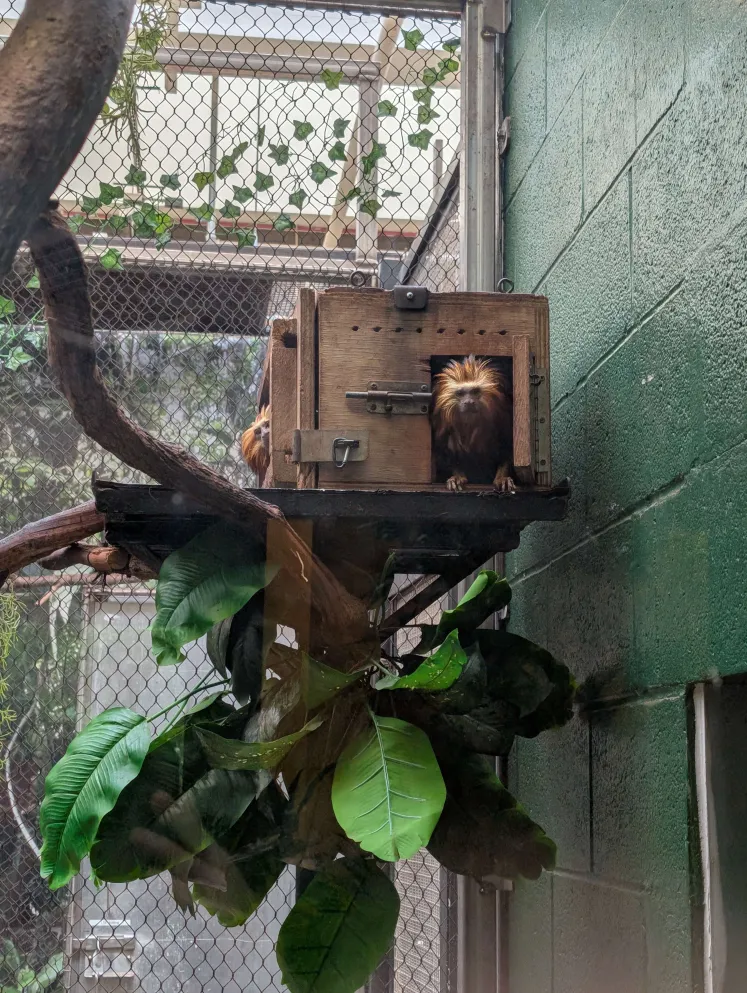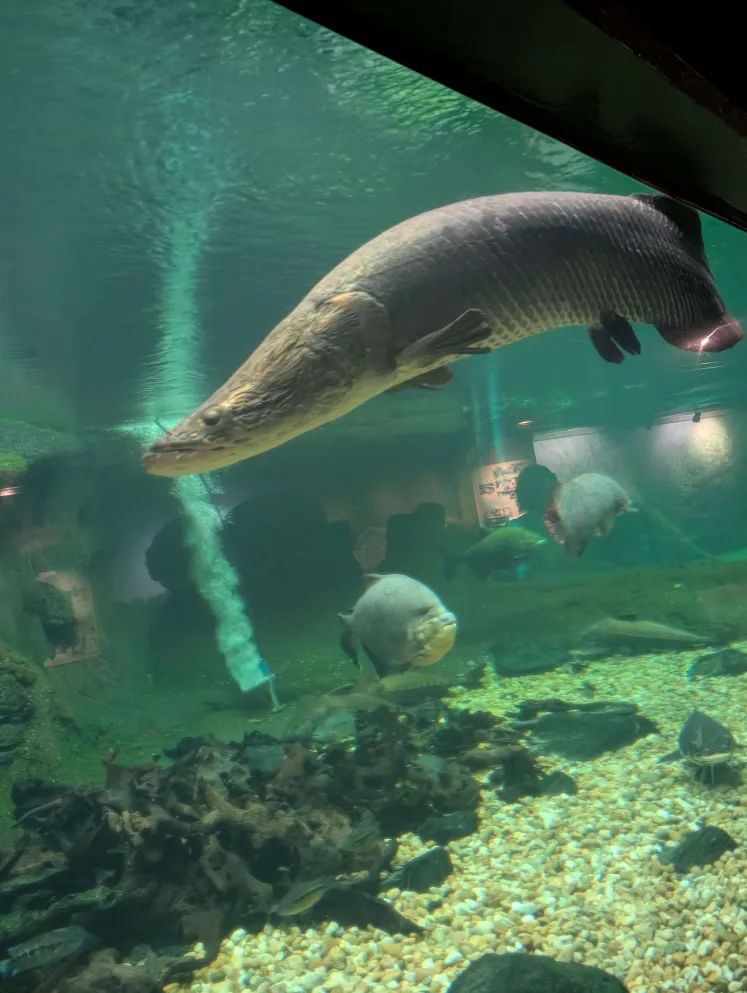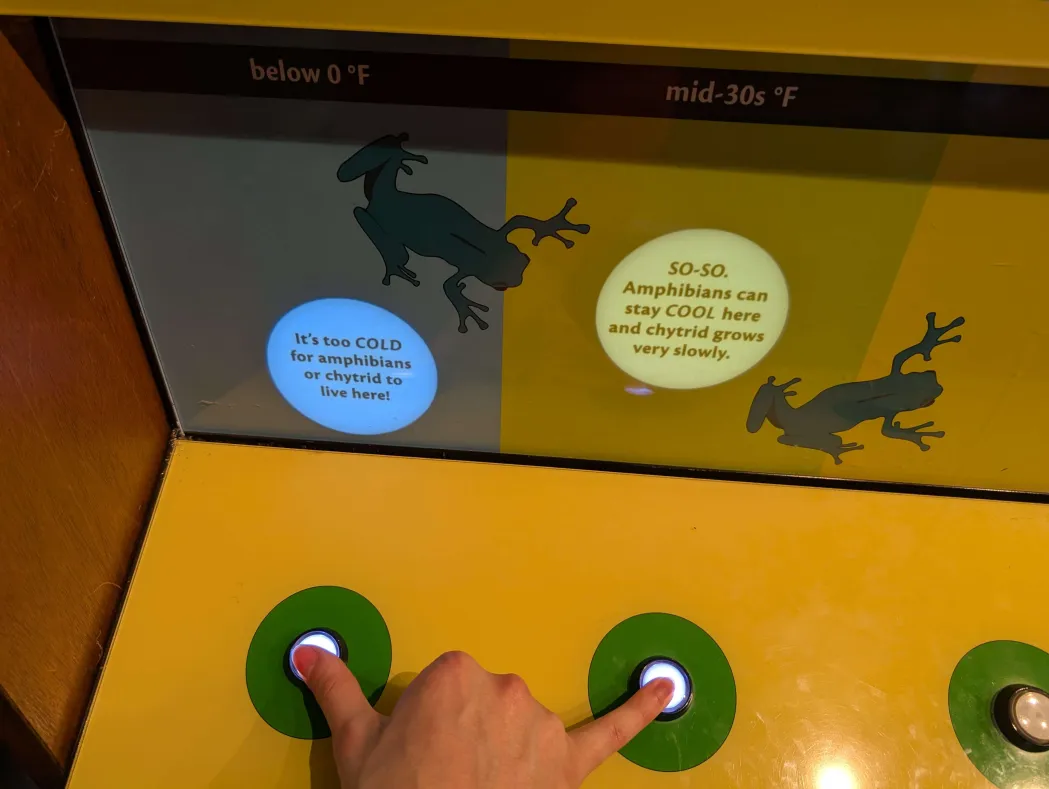Event name: National Zoo Report
Event time and place: Smithsonian National Zoological Park, Washington D.C. May 4, 2025
During my visit to the National Zoo, I explored two buildings housing themed animal collections: the Small Mammal House and Amazonia, with the latter guided by Dr. Merck. These spaces are designed not only to house animals but also to educate visitors and support the well-being of the animals. Both buildings offered engaging and informative experiences through various educational approaches for visitors of all ages.

Beyond standard information panels, the Small Mammal House featured several informative displays that enhanced the visitor experience. A "Moonlight" nocturnal exhibit with reverse lighting allowed visitors to observe nocturnal animals as they would behave in their natural environment. Additionally, an educational display featuring a giant anteater skull explained its long tongue adaptation through both visual and tactile elements. These additional displays enhanced visitor engagement and reinforced the information presented on the text panels.
The Small Mammal House appears designed for a general audience, including both children and adults, with its combination of straightforward information and engaging visuals making it accessible to a wide range of visitors. During my visit, I observed many non-SGC visitors actively reading the information plaques and spending time at the interactive exhibits. The displays that generated the most engagement were those featuring unique animal behaviors or surprising facts, such as the connection between tamarins and chocolate cultivation.

The Amazonia building featured several impressive interactive and educational displays beyond basic information plaques. A beetle-shaped diagram composed of hundreds of beetle species visually emphasized biodiversity while combining scientific accuracy with aesthetic appeal. An interactive frog temperature display educated visitors about how environmental conditions affect amphibians and their susceptibility to chytrid fungus, using visuals and light-up buttons. These exhibits effectively translated complex ecological concepts into tangible, engaging experiences.
Amazonia appears designed for middle school level and above, with more nuanced ecological and conservation messaging, though its use of visuals and interactive displays makes it accessible to younger audiences as well. I observed many visitors, including children, actively engaging with the interactive displays, particularly pressing buttons on the frog temperature exhibit and examining the beetle diagram. The immersive rainforest setting encouraged visitors to spend more time exploring and learning.

The National Zoo demonstrates a strong commitment to animal mental and emotional welfare through thoughtful exhibit design. In the Small Mammal House, exhibits are designed to mimic natural habitats with climbing structures, water features, and varied terrain. Signs encourage visitors to observe how animals utilize these different elements of their environment, whether climbing trees or swimming. These habitat features allow animals to engage in natural behaviors and remain mentally stimulated, reducing stress and preventing the development of stereotypical behaviors often seen in captive animals without proper enrichment. The nocturnal exhibit in the Small Mammal House employs a reverse lighting system that maintains darkness during visitor hours and brightness at night. This design allows nocturnal animals to maintain their natural behavior patterns while still being observable by visitors. By aligning with the animals' biological rhythms, this system helps reduce stress and promotes natural behaviors, demonstrating the zoo's commitment to animal welfare alongside education.
The National Zoo's Amazonia and Small Mammal House effectively balance education, conservation awareness, and animal welfare. By combining interactive exhibits, environmental enrichment, and cultural context, the zoo ensures that visitors leave both informed and empathetic toward the animals and their wild counterparts. Through these efforts, the National Zoo fulfills its dual role as both a sanctuary for animals and an educational institution for humans, promoting conservation through understanding.


